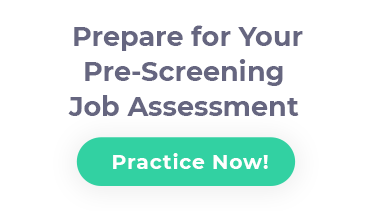Welding Exam Preparation & Free Practice Questions – 2025

What Is the Welding Apprentice Exam?
Applicants throughout the U.S., U.K., and Canada who wish to join a local construction trade union take the welding aptitude test. This welding exam aims to ensure that those seeking a career in welding possess the fundamental skills to join the profession.
The welding test is a timed, multiple-choice exam usually given in a paper and pencil format, though some U.S. unions use a computer-based format. Each local section has a slightly different welding exam but follows a similar format.
Welding Exam Sections
The welding assessment usually consists of three sections. All welding aptitude tests will have a math and a reading section, and some welding assessments will include a third section that may be science, mechanical aptitude, or writing.
Math Section
The welding test’s math section will include several topics, such as:
- Word problems
- Basic arithmetic (addition, multiplication, etc.)
- Percentages, decimals, fractions, ratios
- Highschool level algebra
- Highschool level geometry
You will also receive a formula page and a table of conversions at the beginning of the welding exam to assist in your problem-solving. Start practicing free numerical practice questions.
Reading Comprehension
The reading section of the welding test will consist of text paragraphs that you must read and answer questions about. The topic of the passage will likely be related to the welding industry in general but will present all the information needed to answer the questions in the passage.
This section aims to assess your grammar skills, ability to read and analyze information, and ability to draw logical conclusions from the written material. Take free reading comprehension practice questions.
Science or Mechanical Reasoning
Some welding aptitude tests will include a third section on science or mechanical reasoning. This portion of the welding assessment confirms that you have a basic understanding of physical and mechanical concepts that you must apply during your career as a welder.
Some topics that may be in this section include:
- Mass
- Gravity
- Conversions
- Distance
- States of Matter
- Units of measure
- Volume
Welding Exam Sample Questions
Here are a few sample questions similar to what you may find on the welding exam:
Question 1:
You have three poles with the following lengths: 11 feet 5 inches, 12 feet 2 inches, and 4 feet 9 inches. What is the total length of all three poles?
- 28 feet, 4 inches
- 27 feet, 4 inches
- 27 feet, 9 inches
- 28 feet, 9 inches
Question 2:
How do you write 1/5 as a percentage?
- 5%
- 20%
- 25%
- 50%
Question 3:
Read the following paragraph:
Larry and Sam are on a job. They have been working since 5am and now it is time for lunch. A friend recommended a good sandwich shop down the road, so that is where their going to go. Larry is excited to get an Italian sub, and Sam plans to get a turkey club.
Which of the following is the correct word replacement for the underlined word?
- There
- They are
- It is correct as is
- None of the above
Question 4:
Jason noticed that part of his pipe had rusted, leaving behind small holes. What kind of weld can he use to repair this?
- Slot weld
- Surfacing weld
- Plug weld
- Spot weld
Question 5:
Around what temperature does steel start to melt?
- 1,900 F
- 2,000
- 2,100 F
- 2,200 F
Answers:
- The correct answer is A. 11 + 12 + 4 = 27 feet and 5 + 2 + 9 = 16 inches. Because 16 inches is longer than one foot, 16 – 12 = 4 inches and 27 + 1 = 28 feet. Therefore, the total length is 28 feet and 4 inches.
- B
- B
- B
- D
How to Prepare for the Welding Apprentice Assessment?
Preparing for the welding assessment without a plan can be stressful and lead to a lower score. It is essential to create a study plan using available resources and to stick to it. Practice tests and study guides are the best resources you can use while preparing for the welding test.
Practice tests are a great way to work through sample questions in a simulated testing environment. This resource will allow you to practice your timing and better understand the questions on the welding exam. Sample welding tests will also usually score your attempt and give you more details on which questions you got right, which ones you got wrong, and why. This information will help you be successful on the actual welding assessment during your recruitment process.
Study guides are also excellent resources for the welding aptitude test because they help you review the information you need for the welding exam. These are particularly useful for the technical questions that you will encounter in the third section of the welding aptitude test and the mathematics section. This list of topics will help you realize what areas to focus on and can guide your study plan.
Applicants who take the time to use the online resources available do significantly better on the welding assessment than applicants who do not properly prepare. Therefore, it is essential to create a good study plan and give yourself adequate time to use the available resources and prepare for the welding test.

